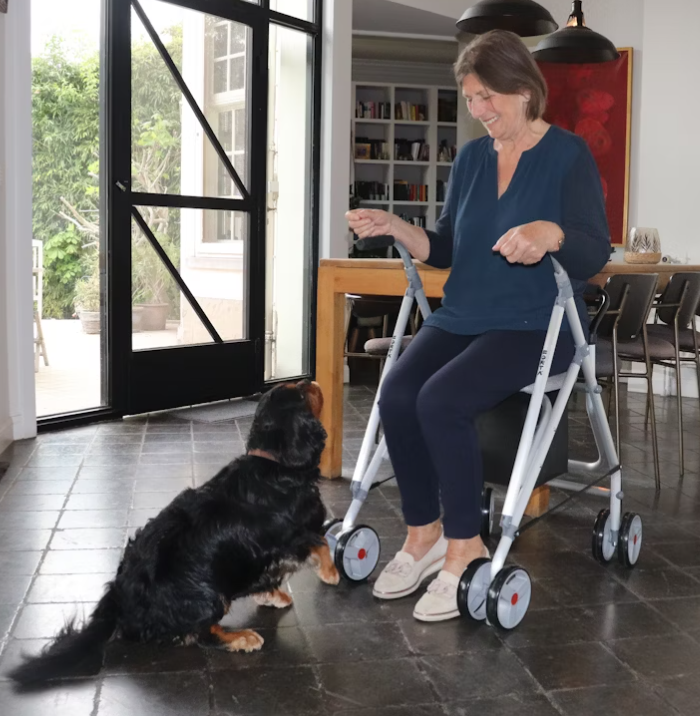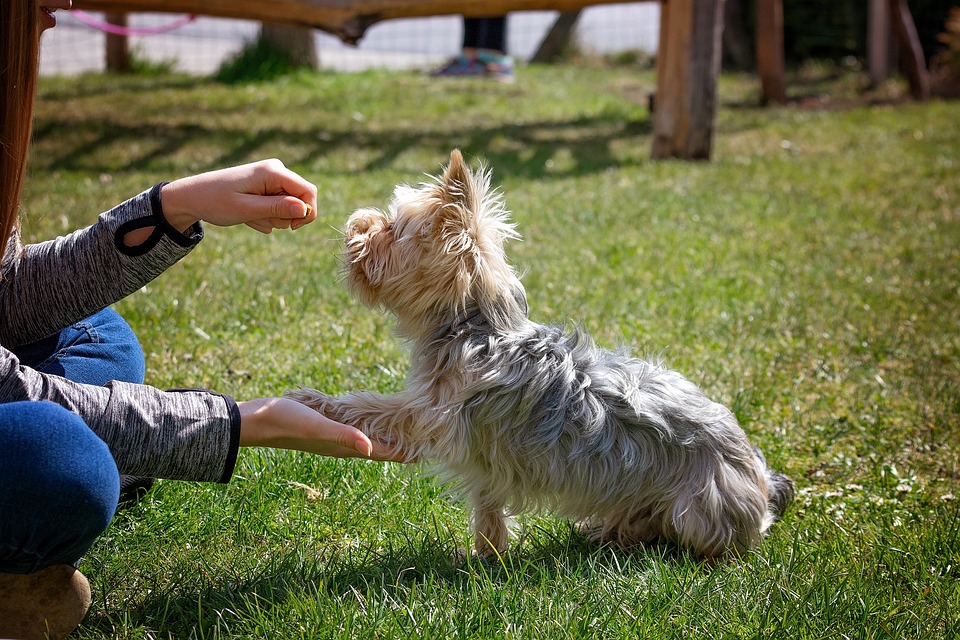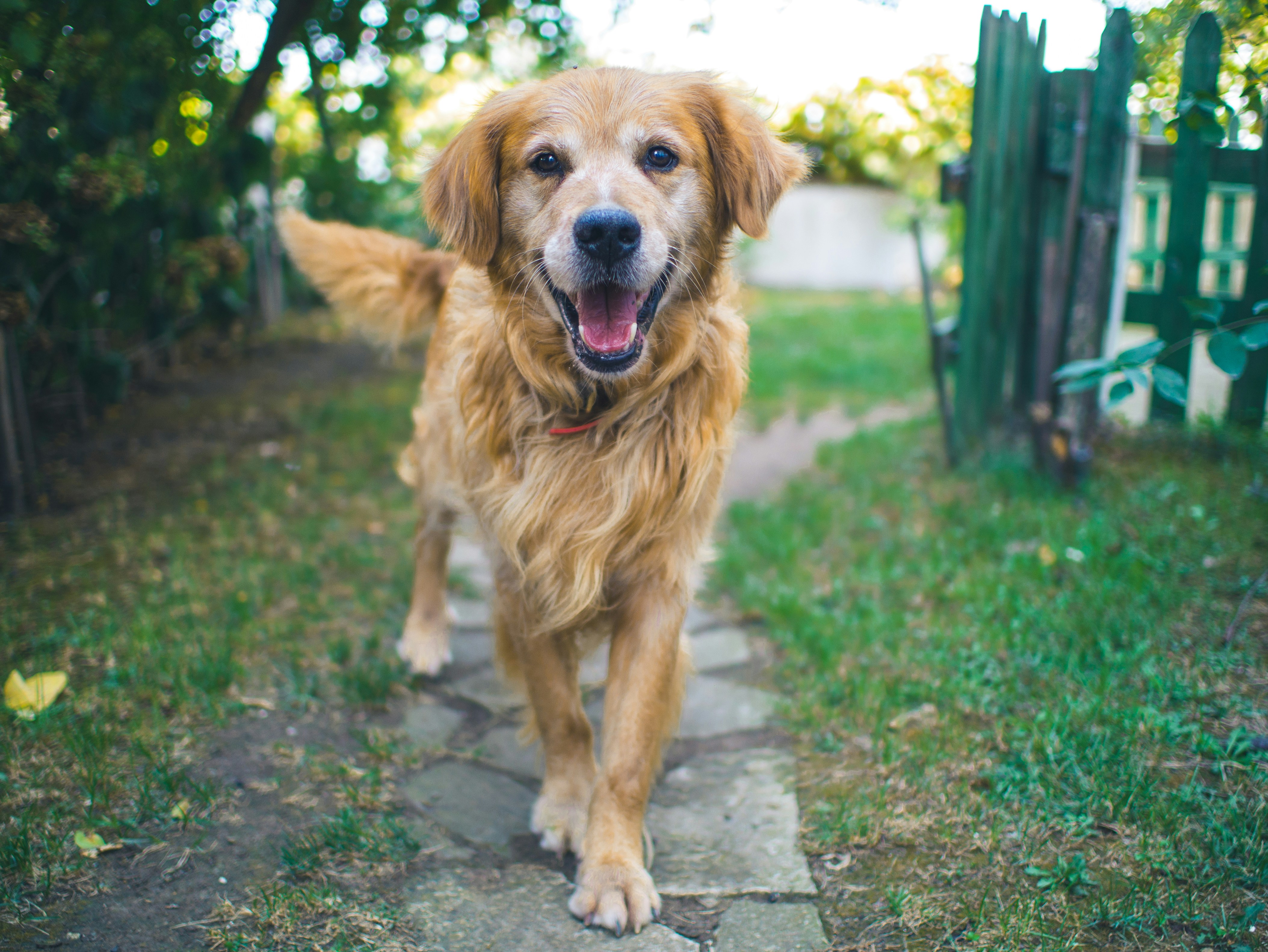
What comes to your mind when you hear the word ‘aid’? Do you think of support such as mobility devices, medication, or a person assisting someone with a health condition? Have you ever thought of ‘aid’ in terms of dogs?
Dogs are beloved members of our families, but beyond their companionship, they can also serve as invaluable assistants for individuals with physical and mental health challenges. Aid dogs, also known as ‘service dogs’ or ‘assistance dogs’ undergo specialized training that transform them into reliable partners. They are capable of responding calmly and effectively in a wide range of situations and assisting their owners with daily challenges.
Below, we’ll explore the nature of aid dogs, what they do, how they are trained, and why they play such an essential role in helping many people create independent lives filled with confidence.
What is an Aid Dog?
An aid dog is a dog trained to perform specific tasks that mitigate the symptoms of a person’s disability. The tasks must be directly related to the individual’s health condition. Examples include:
- Guiding individuals with visual impairments.
- Assisting individuals with mobility challenges by retrieving items, opening doors, or providing balance support.
- Alerting individuals to medical episodes, such as seizures, too low/high blood sugar levels, cardiac issues, etc.
- Offering psychiatric support for individuals with mental health conditions, such as PTSD, anxiety, or depression by performing deep pressure therapy (DPT), recognizing anxiety episodes or panic attacks and alerting to them, guiding the owner to a safe place, providing crowd control, etc.
It’s important to clarify that tasks can vary depending on the individual and their symptoms.
Most importantly, aid dogs are highly trained to meet the unique needs of their handlers, helping them regain independence and confidence in daily life. Unlike companion animals, who provide comfort and companionship only, aid dogs undergo specialized training to perform specific tasks.

What Makes Aid Dog Training Different- Key Elements?
While most dogs can be taught in basic obedience skills like “sit” and “stay,” aid dog training goes far beyond obedience commands. These dogs are prepared to perform specialized tasks that directly support their handler’s daily needs.
What truly sets aid dog training apart, though, is that it’s not just about teaching a dog what commands, but about creating a partnership! Handler and dog learn to work together as a team in a wide variety of environments, and rely on their strong bond built on trust and mutual respect.
The training process typically includes several key elements:
Foundational Skills &
Socialization
Every
successful aid dog team starts with strong foundational skills.
Before a dog can be
involved in more advanced task training,
they must first master the basics, both in terms
of behavior
and social interaction.
Core obedience skills like walking calmly on a leash and reliably responding to cues such as ‘sit’, ‘wait’, and ‘come’ build the foundation for all future training. These essential skills create clear communication between the dog and their handler, and contribute to building trust and consistency that the team can rely on in any situation.
Proper socialization is also a key part of the foundation skills. It helps dogs in training grow into a confident, well-mannered and reliable partners. From a young age, the dog should be exposed to various people, animals, sounds, and environments. This includes everything from meeting strangers politely to walking through busy streets, hearing loud noises, or calmly observing other dogs without becoming overly excited or fearful.
Socialization ensures the dog is accustomed to potential stimuli in their surroundings and can navigate social situations with ease. When combined with solid obedience, it creates a strong foundation, which handlers can build upon later in the process.
Specialized Tasks
Once a dog has mastered obedience, they can transition to task-based training and acquire skills tailored to the handler’s specific health condition. As we mentioned in the beginning of today’s article, specific service dog tasks can vary and be related to both physical and mental health issues.
Common service dog tasks include:
- Guiding individuals with sight impairments;
- Providing mobility/balance support to individuals with mobility impairments;
- Alerting to medical episodes, such as changes in blood pressure or blood sugar levels;
- Alerting individuals with hearing impairments to sounds in the environment, like doorbells or alarms;
- Assisting individuals with mental health issues by showing trained behaviors to ‘ground’ them during dissociative episodes, providing various types of tactile stimulation, such as giving a kiss, nose-nudging and deep pressure therapy, crowd control and more.
Public Access Manners
Excellent manners in public are crucial for aid dogs. They must be able to navigate various environments, including busy, distracting spaces, without becoming anxious, disruptive, or distracted.
Maintaining focus on the handler is an invaluable skill! It ensures the dog can reliably perform their duties as an aid dog, regardless of the surroundings. Whether walking through a crowded street, riding public transportation, or visiting a busy store, a well-trained aid dog can remain calm, focused, and ready to assist.
This level of discipline requires gradual exposure to different settings, people, and situations, which helps the dog become confident and resilient. Over time, these experiences help build a well-functioning team that can handle everyday challenges and navigate all types of situations.
Building Confidence & Functioning as a Team
While this isn’t a specific training component, it’s still a crucial part of the overall process, where handlers and their dogs learn to work together as a service dog team.
Gradually introducing a dog to new and challenging situations trains them to remain steady and focused, even in the face of unexpected events. At the same time, handlers also learn to stay calm and confident, as their energy and emotional patterns directly affect their dog’s behavior.
Unlike typical pet training, which can be more relaxed and playful, aid dog training requires patience, consistency, and a deep bond of trust. It’s a journey where both the handler and the dog grow together, developing the skills, confidence, and connection needed to navigate the world as a reliable, unified team.

Options to Train an Aid Dog
Depending on your local regulations, there are several pathways to consider, each with its advantages and challenges.
Obtaining a Fully Trained Dog
-
For-Profit Organizations
These organizations provide fully trained aid dogs ready to perform tasks related to specific disabilities. While this option offers immediate support, it often comes with high costs. Obtaining a trained service dog is often prohibitively expensive for many individuals, with prices reaching up to $20,000–$30,000.
The high costs reflect the significant time and resources that organizations specializing in aid dogs invest. Typically, they raise and train these dogs for around two years before pairing them with a person with a disability.
-
Non-Profit Organizations
Charities and non-profits provide trained dogs at reduced costs (often limited to an application fee) or for free. However, availability is often limited, and waiting periods can be lengthy, sometimes lasting a year or more. This extended wait can pose a significant challenge for individuals who need an assistance dog as soon as possible.
With that said, many people decide to train their own pet dogs as aid dogs or have them trained by a professional trainer.
Getting a Dog and Training Them Yourself
or with the Help of a Trainer
- Working with a Professional Trainer
You can adopt a dog and hire a professional trainer to teach them the necessary skills. This approach allows for a customized training plan designed specifically for your specific needs, and training goals.
While this method can be effective, it requires a significant investment of time, effort, and money.
Moreover, it’s important to consider the trainer’s availability and schedule and be prepared to adapt to it. Additionally, you’ll need to stay actively involved in the process to ensure your dog continues to progress and that you develop a strong bond with them throughout the entire training journey.
- Self-Training Your Dog
Self-training has proven to be a great option, especially in countries where the law supports and recognizes this approach. However, this method requires a lot of patience, consistency, and the ability to find the right training techniques that work best for your dog’s personality and learning style.
Training your own dog is a marathon, not a sprint. It’s a long-term commitment that focuses on building a strong foundation of skills and behaviors over time. The process helps you and your dog get to know each other on a much deeper level, where respect, trust, and mutual understanding thrive.
Along the way, you’ll develop problem-solving skills as you encounter challenges and adapt your methods to suit your dog’s progress. This journey will also allow you to tailor the training to your specific needs, and ensure your dog learns the exact tasks and manners required for your lifestyle.
While the road may be demanding, the end result is always worth it- a well-trained dog and an unbreakable partnership!

What Does Self-Training an Aid Dog Involve?
Self-training an assistance/service dog can be a life-transforming experience for you and your furry friend. However, it requires careful planning, dedication, and a good understanding of what’s involved.
Selecting the Right Dog
The first and perhaps most important step is choosing a dog with
the right temperament, health, and personality to take on the role of
an aid dog.
A suitable candidate should be calm, focused, and eager to learn, with a people-oriented personality, so that they can develop a strong bond with their handler. It’s also essential to consider the dog’s physical abilities and long-term health, as they need to reliably perform specific tasks over many years.
Some people start with a puppy, so that they can shape their behavior and socialize them from an early age, while others choose an adult dog whose temperament and strengths are already evident.
If you already have a beloved paw partner, with whom you share a strong bond, you may consider training them as your service dog to support you with your specific needs.
Whichever path you take, it’s essential to assess the dog’s natural abilities and motivation, and ensure they are suited to the responsibilities of an aid dog.
Structured Training
Self-training requires consistency and a clear training plan. Training without a plan, and relying solely on your daily motivation, won’t bring the desired results. Needless to say, it can lead to confusion for both you and your dog.
A structured training plan, or preferably a structured training program should cover:
- Basic Obedience
As mentioned earlier in the article, obedience training lays the foundation for more complex, task-based training. Your dog should first master commands such as sit, stay, recall, and walking politely on a leash before moving on to service dog training.
- Specialized Tasks
Task-based training should be tailored to the handler’s specific needs. Training your own dog provides the best opportunity to customize the process to suit your requirements and achieve your training goals.
- Public Access Skills
These skills ensure that your dog can remain calm, focused, and well-mannered in different situations and environments, particularly in public settings such as restaurants, shops, and on public transport.
Awareness of Local Laws
Legal requirements for aid dogs vary by country/province/region, so it’s crucial to familiarize with your local laws.
For example, in the US, the Americans with Disabilities Act (ADA) explicitly allows individuals with disabilities to train their own service animals.
The ADA does not require certification, registration, or identification for service animals. What matters is that the dog is under control and trained to perform tasks directly related to the handler’s disability.
However, because of the liberal laws and the growing trend of pet dogs being falsely presented as service animals, many business owners have become more welcoming toward service dogs that have proper documentation as proof of their training and status.
Also, handlers should be prepared to answer the two legally permitted questions about their dog’s role:
1. Is the dog required because of a disability?
2. What tasks has the dog been trained to perform?
In the UK, assistance dogs are protected under the Equality Act 2010, which does not require them to be professionally trained to be legally recognized.
However, because there are no standardized training guidelines, handlers may face challenges with public recognition or proving their dog’s status, especially in situations where staff are unfamiliar with the law. Therefore, having a certificate of training, proper training or identification gear, and a medical letter confirming the person’s eligibility for an assistance dog can be very useful.
Let’s also mention Australia, where aid (assistance dogs) are protected under the Disability Discrimination Act 1992.
"For the purposes of this Act, an assistance animal is a dog or other animal:
(a) accredited under a law of a State or Territory that provides for the accreditation of animals trained to assist a person with a disability to alleviate the effect of the disability; or
(b) accredited by an animal training organisation prescribed by the regulations for the purposes of this paragraph; or
(c) trained:
(i) to assist a person with a disability to alleviate the effect of the disability; and
(ii) to meet standards of hygiene and behaviour that are appropriate for an animal in a public place".
Handler Education
Training an aid dog is not just about teaching the dog, it also involves educating the handler.
A successful partnership depends on the handler’s level of understanding of their own dog, learning effective training techniques, and recognizing how their own actions and cues influence the dog.
Handlers must become proficient in giving clear commands, and reinforcing the desired behaviors. Furthermore, they need to learn to manage challenging situations calmly and consistently.
Ongoing education also includes learning about public access rights, safety protocols, and how to maintain the dog’s health and well-being. By investing in their own knowledge, handlers help ensure that their dog’s training is applied correctly in real-world situations, fostering a reliable and supportive partnership.












